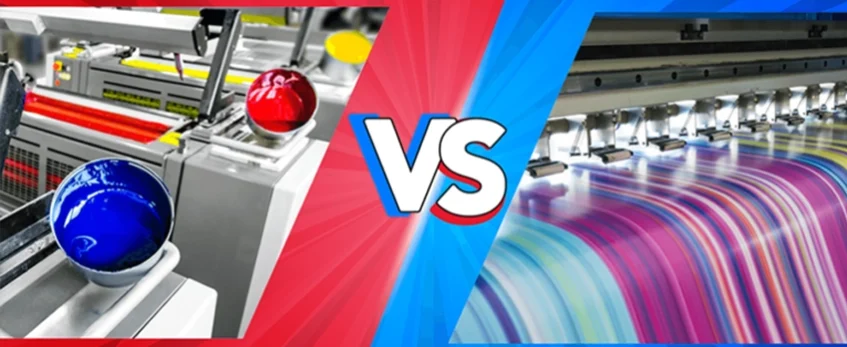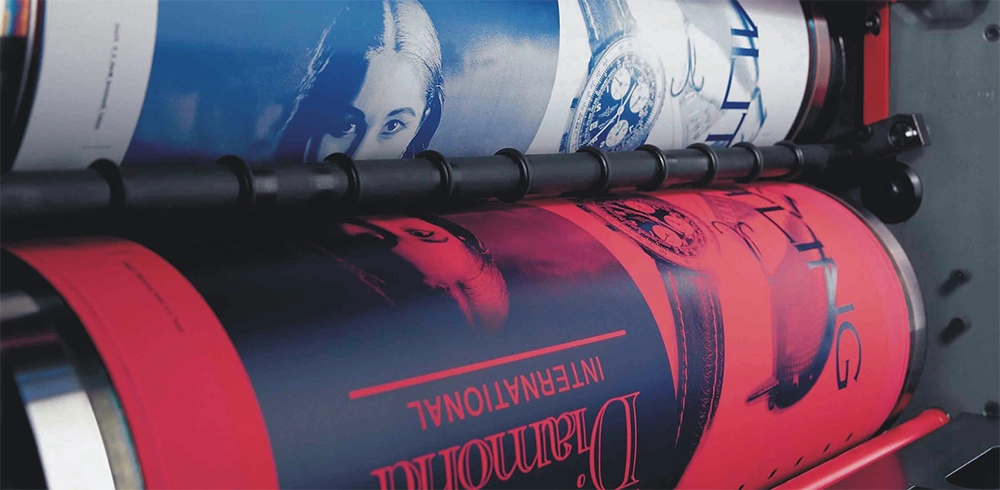No products in the cart.

Digital vs Offset Printing: Which One Is Right for You?
When it comes to printing, whether for marketing materials, packaging, or personal projects, the choice between digital and offset printing is one of the most important decisions you’ll make. Both methods have their strengths, and the best option often depends on your goals, budget, and timeline.
In this blog post, we’ll break down what digital and offset printing are, how they differ, and when to choose one over the other. Whether you’re a small business owner, graphic designer, or just someone looking to print something with high quality, this guide is for you.
What is Offset Printing?
Offset printing, also known as offset lithography, is a traditional printing technique that has been around for over a century. It works by transferring (or “offsetting”) ink from a plate to a rubber blanket, and then onto the printing surface—typically paper.

Each color used in an offset job requires its own metal plate. Most commercial offset printing uses CMYK color (cyan, magenta, yellow, and black), and often Pantone spot colors for precision.
Because the setup process is quite involved (making plates, calibrating the machine, and running test prints), offset is best suited for large print runs where consistency and cost-efficiency are key.
What is Digital Printing?
Digital printing skips the plates altogether. It involves sending digital files (like PDFs) directly to the printer, which prints the image or text straight onto the surface—much like a high-end version of your home inkjet or laser printer.
Digital printing uses toner (like in laser printers) or liquid ink (as in some high-end models) and can handle short runs very efficiently. It’s ideal for on-demand jobs and allows for easy customization, like printing variable data (names, addresses, barcodes, etc.) on each piece.
Key Differences Between Digital and Offset Printing
Let’s look at some of the main differences that can influence your decision:
1- Cost
Offset printing has a higher upfront cost because of plate creation and setup, but the cost per unit decreases significantly with higher quantities.
Digital printing has almost no setup costs, making it more affordable for short runs or one-off jobs.
2- Print Volume
Offset is more economical when printing large volumes, typically 500 units or more.
Digital excels with small batch printing, even as low as one single copy.
3- Turnaround Time
Digital printing is fast. Since there’s no need for setup or drying time, you can often get your prints the same day.
Offset printing takes longer due to the setup and plate-making process, but once it’s running, it’s very efficient for large jobs.
4- Print Quality
Offset printing offers superior quality when it comes to color consistency and sharp details, especially for large solid color areas and fine gradients.
Digital printing quality has improved drastically in recent years, and for many projects, it’s more than good enough—especially when speed and flexibility matter.
5- Customization
Digital printing is perfect for personalization. You can print a thousand flyers, each with a different name, offer, or code.
Offset does not allow for variable data printing without resetting the job—so it’s better for static content.
When to Choose Digital Printing
Digital printing is a fantastic choice when:
- You need a quick turnaround (same-day or next-day printing).
- You’re printing a small quantity (business cards, brochures, posters).
- You need personalization, like names on invitations or individualized coupons.
- You’re printing test runs or prototypes before a bigger print job.
Example Use Cases:
- Event flyers or posters for a local event
- Personalized wedding invitations or thank-you cards
- Business cards for a small team
- Short-run packaging for a product launch
When to Choose Offset Printing
Offset printing shines in scenarios where:
- You’re printing in large quantities (usually 500+).
- Color accuracy and brand consistency are critical.
- You’re using specialty inks (like metallics or Pantone colors).
- You want to print on unique materials or larger sizes not supported by digital printers.
Example Use Cases:
- High-volume catalogs or magazines
- Large runs of corporate brochures
- Packaging with specific color matching needs
- Large poster runs or custom die-cut materials
A Quick Comparison Table
| Feature | Digital Printing | Offset Printing |
|---|---|---|
| Setup Cost | Low | High |
| Best For | Small runs, personalization | Large runs, color accuracy |
| Turnaround Time | Fast | Slower |
| Quality | Great (modern printers) | Excellent |
| Variable Data | Yes | No |
| Specialty Colors | Limited | Yes (e.g., Pantone) |
| Paper Options | Limited (but growing) | Wide variety |
So, Which One Should You Choose?
There’s no one-size-fits-all answer—it really depends on your needs. If you’re looking for speed, flexibility, and affordability for short runs, digital is the way to go. But if you want precise colors, large volumes, or that classic high-end finish, offset might be your best bet.
Many businesses today actually use both—starting with digital to test designs or run small batches, and switching to offset once they’re ready to go big.
Final Thoughts
The printing world has come a long way, and both digital and offset methods offer incredible benefits. The key is to match the right technique to your project’s size, budget, timeline, and quality expectations.
If you’re still unsure, reach out to a local print shop—they’ll usually be happy to guide you and may even offer hybrid solutions that blend both technologies.
Whether you’re printing 10 custom thank-you cards or 10,000 product catalogs, choosing the right method can make all the difference.







